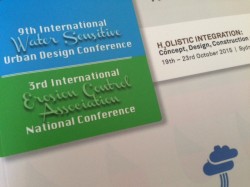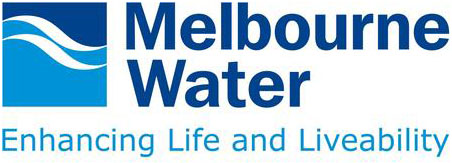resource library
ArrayConference Presentations: 2015 Water Sensitive Urban Design Conference

12/11/2015
Water professionals from a range of disciplines participated in this year's Water Sensitive Urban Design Conference, held in Sydney in October 2015. We have selected a few presentations we thought would be of interest to our audience:
Evolution of raingarden design at the City of Sydney
Paul Tatham gave an interesting presentation on City of Sydney's journey regarding the evolution of the design, construction and maintenance of streetscape raingardens. His presentation showed that the key elements of a successful streetscape raingarden is to maximise ponding depth, install entry pit systems and implement clever planting.
Retrofitting raingardens: Understanding context and satisfaction to guide streetscape change
Dr Meredith Dobbie from Monash University gave a great social science perspective on raingardens: She reported on a study into community perceptions of raingardens in Melbourne, where the residents’ satisfaction with the appearance of their street was explored in relation to the street’s structure and the presence of raingardens. Lessons learnt: a raingarden designed for one location is unlikely to be appropriate for another, quite different, location.
Auditing shows up mistakes of the past: please don’t repeat!
Murray Powell from optimal Solutions gave a great presentation about lessons learnt from auditing gross pollutant traps. The aim of this presentation was to “close the loop”, by providing REAL information back to decision makers on what’s working, what’s not…. and most importantly why. Some great lessons in there!
Creating habitat through WSUD
Using a number of case studies, David Knights from Alluvium demonstrated how WSUD can be used to restore aquatic habitat and to contribute additional values to our stormwater systems. There sure are some great opportunities for multiple benefits!
Assessing the performance of stormwater treatment systems in the field
Alexa McAuley, also from Alluvium, described a method for rapid field assessment of treatment system condition to assess performance. While the techniques used are pretty simple (but therefore cost-effective), the results seem to have been powerful, helping to highlight issues, uncover the reasons for poor performance and inform options for improvement.
